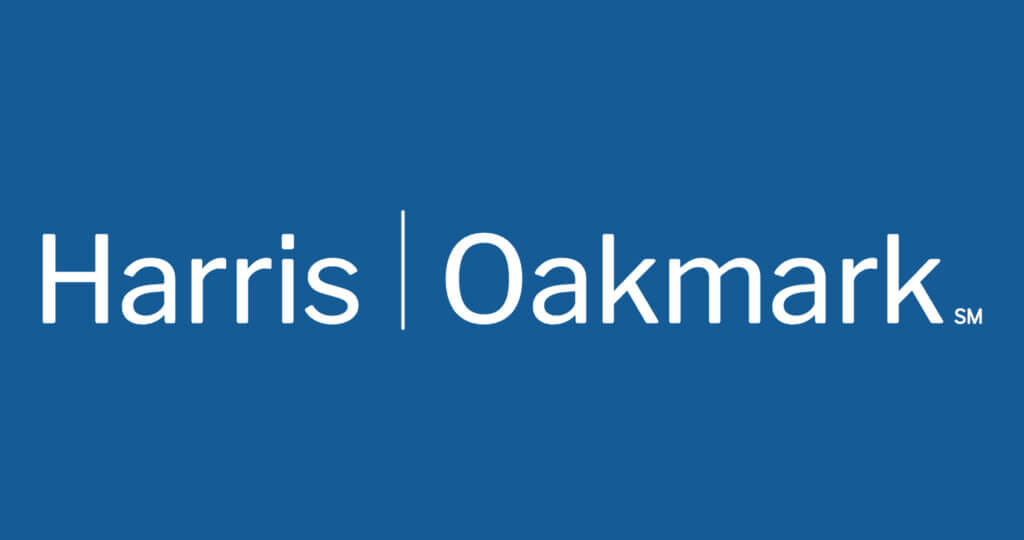Oakmark International Fund - Investor Class
Average Annual Total Returns 09/30/12
Since Inception 09/30/92 9.80%
10-year 10.75%
5-year -0.11%
1-year 17.40%
3-month 8.18%
Gross Expense Ratio as of 09/30/11 was 1.06%
Past performance is no guarantee of future results. The performance data quoted represents past performance. Current performance may be lower or higher than the performance data quoted. The investment return and principal value vary so that an investor’s shares when redeemed may be worth more or less than the original cost. The performance of the Funds does not reflect the 2% redemption fee imposed on shares redeemed within 90 days of purchase. To obtain the most recent month-end performance data, view it here.
The Oakmark International Fund returned 17% for the 12 months ended September 30, 2012, comparing favorably to the MSCI World ex U.S. Index, which returned 14%. The Fund has returned an average of 10% per year since its inception in September 1992, outperforming the MSCI World ex U.S. Index, which has averaged 6% per year over the same period.
Lloyds Banking Group, the dominant retail bank in the U.K., was the top contributor to performance for the past 12 months. We initiated our Lloyds position in December 2011 when uncertainty about macroeconomic conditions, as well as about Lloyds’s management succession, caused shares to fall 64% over the course of the year. Share prices have rebounded and the stock has returned 65% since our initial purchase. The new CEO, Antonio Osorio, is more focused on cost efficiency and risk controls than previous leaders and is focused on disposing of non-core assets. The HBOS integration continues. We expect credit costs to come down as Lloyds works through its HBOS book. We continue to believe that this integration affords significant opportunities for cost improvements, although it will be some time before they are realized. We believe Lloyd’s strong deposit franchise is being significantly undervalued by the market in today’s extremely low interest rate environment. Lloyds has very little exposure to PIIGS (Portugal, Ireland, Italy, Greece and Spain) and we believe it is a great investment for our shareholders.
ASSA ABLOY, the world’s largest manufacturer of locks, security doors and access control systems, was another top contributor for the fiscal year ending September 30, returning 59%. Despite a slowdown in the European economy, ASSA is experiencing stable demand through much of Europe, although demand in Italy and Spain is weakening. ASSA has recently increased its focus on R&D, both through internal growth and through acquisitions. Over the past year, many of the company’s acquisitions have focused on door systems. Emerging market penetration continues and now makes up close to 25% of the company’s sales. We expect ASSA to use cash to keep the innovation cycle turning, either through technology innovation or via acquisitions.
ROHM, a Japanese-based semiconductor manufacturer, was the top detractor for the year, falling 35%. Share prices fell the most during the second quarter of 2012 after ROHM released fiscal year results that showed a year-over-year sales decline of approximately 11% and an operating profit decline of approximately 81%. Most of ROHM’s troubles revolve around its failure to expand its customer base outside of Japan. Historically ROHM’s management focused on Japanese consumer electronics companies because of proximity and ease of communication. However, ROHM’s new president and previous head of overseas sales, Satoshi Sawaura, has made overseas expansion a priority. We think that investing in overseas offices to get closer to clients is a very positive move. For example, ROHM’s backlog for chips used in automobiles has been growing, and the recent Thai floods caused more non-Japanese auto companies to approach ROHM for potential business. Management also seems to be more focused on shareholder value and is considering a share buyback, especially because of the weak share price. With the overseas expansion, potential share buyback, and very solid balance sheet ROHM is, in our view, attractively priced. We remain confident about ROHM’s long-term risk-reward profile.
Canon, a Japanese professional and consumer imaging solutions company, also detracted from performance for the year, falling 28%. Investors reacted negatively to depressed first-quarter sales, which were primarily a result of a 9% sales decrease in Canon’s office segment. The lower sales figures also prompted the company to reduce earnings guidance. Additionally, the strong yen continues to negatively impact margins. However, Canon announced it will release its first mirrorless camera later this year. We expect the new product will finally allow Canon to successfully compete with other companies who already have products in this category. Canon has also continued its share buyback program, and it has repurchased almost 13% of outstanding shares since 2005. We believe Canon is an attractive investment due to its formidable technological innovation and strength. The company holds several patents for the products it manufactures, giving the firm a measure of exclusivity. We think that Canon remains a good investment opportunity for our shareholders.
We made only a few changes to the portfolio during the quarter. We sold our position in G4S, and we added FANUC to the Fund. FANUC is the world’s largest maker of computer numerically controlled equipment, which is necessary to automate machine tools in various manufacturing processes.
Geographically we ended the quarter with 70% of our holdings in Europe, 24% in Japan, 4% in Australia and the remainder in North America.
The U.S. dollar remains undervalued compared to many global currencies. We continue to hedge the portfolio defensively and currently have hedging positions on a portion of the Fund’s Australian dollar, Japanese yen, Swiss franc and Swedish krona exposures.
We continue to adhere to a long-term value philosophy that we believe has enabled us to build a portfolio of high quality names trading at discounts to our estimate of intrinsic value. We thank you, our shareholders, for your continued support.
As of 9/30/12, Lloyds Banking Group PLC represented 3.3%, Assa Abloy AB, Class B 1.4%, ROHM Co., Ltd. 2.4%, Canon, Inc. 3.3%, G4S PLC 0%, and FANUC Corp. 0.5% of the Oakmark International Fund’s total net assets. Portfolio holdings are subject to change without notice and are not intended as recommendations of individual stocks.
The MSCI World ex U.S. Index (Net) is a free float-adjusted market capitalization index that is designed to measure international developed market equity performance, excluding the U.S. This benchmark calculates reinvested dividends net of withholding taxes using Luxembourg tax rates. This index is unmanaged and investors cannot invest directly in this index.
Investing in foreign securities presents risks that in some ways may be greater than U.S. investments. Those risks include: currency fluctuation; different regulation, accounting standards, trading practices and levels of available information; generally higher transaction costs; and political risks.
The discussion of the Fund’s investments and investment strategy (including current investment themes, the portfolio managers’ research and investment process, and portfolio characteristics) represents the Fund’s investments and the views of the portfolio managers and Harris Associates L.P., the Fund’s investment adviser, at the time of this letter, and are subject to change without notice.







